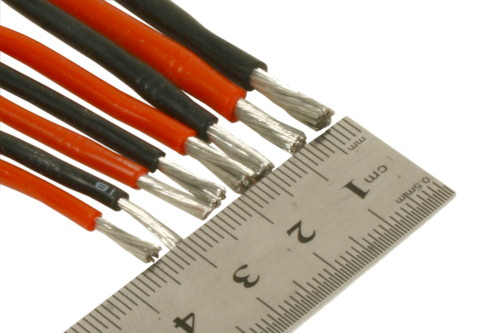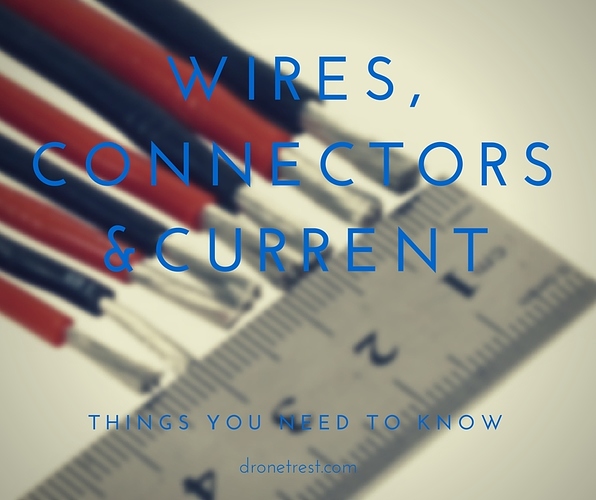When building your own drone its important to make sure all the wires and connectors you are using will be able to handle the current that is flowing through it. Using a wire that cannot handle the current flowing through it will ultimately melt, and could possibly cause your drone to crash.
Here is a power distribution board that I passed too much current through where the copper trace ended up melting.
Maximum current of a wire

In general here is a lost of the most common size wires and their corresponding current rating. You will often find that high C rating batteries will often use thicker wires as they carry much more current.
- 12AWG Wire - 100A
- 14AWG Wire - 80A
- 16AWG Wire - 50A
- 18AWG Wire - 30A
- 20AWG Wire - 20A
- 22AWG Wire- 10A
Alternatively you can use this general rule of thumb to quickly find out the maximum current rating of a wire.
Amps = cross sectional area (mm^2) x 25
Types of wires
In general you always want to use silicone multi-strand wires as they are nice and flexible. Multi-strad wire just means that instead of a solid strand of copper in the wire, lots of little wires are used stranded together which makes it much more flexible and easy to work with in the small spaces of R/C drones. However they are more expensive than single strand wire.
Other wire calculations
If you are using particularly long wires (such as a big fixed wing drone, you might want to consider things such as voltage loss over the wire.
- Resistance per meter = 0.0168 / cross sectional area (0.0168 / mm^2)
- Voltage drop per meter = (current x 0.0168)/ cross sectional area ((current x 0.0168) / mm^2)
- Power loss per meter = (current^2) x 0.0168)/ cross sectional area ((current^2) x 0.0168) / mm^2)
Connector Current Ratings
Now that you have an idea about how thick the wire needs to be based on the current flowing through it. You also need to make sure the connectors you are using will also be able to handle the current.
- JST connector - up to 5A
- 2mm bullet connectors - up to 20 Amps
- 3.5mm bullet connectors - up to 40 Amps
- XT60 connectors - up to 60 Amps
- Deans / T-Plug - up to 60 Amps
- EC3 connector - up to 60 Amps
- 4mm bullet connectors - up to 70 Amps
- EC5 connectors - up to 120 Amps
- 6mm bullet connectors - up to 120 Amps
- 8mm bullet connectors - up to 200 Amps
There is a great page here that you can use to check the current ratings for a huge range of other R/C connectors.
Whats the best best battery connector, XT60, Deans, or EC3?
There is much debate on the internet about which one is best. In my option is just comes down to your own preference. In my option its best to keep to a certain connector so that it makes life easy when using your batteries on other drones. XT60 connectors have become quite popular as they are easy to connect, but quite secure, but in terms of current rating I would say Deans/T-Plug will win (assuming you are using high quality deans connectors and not cheapo Chinese knockoffs)

